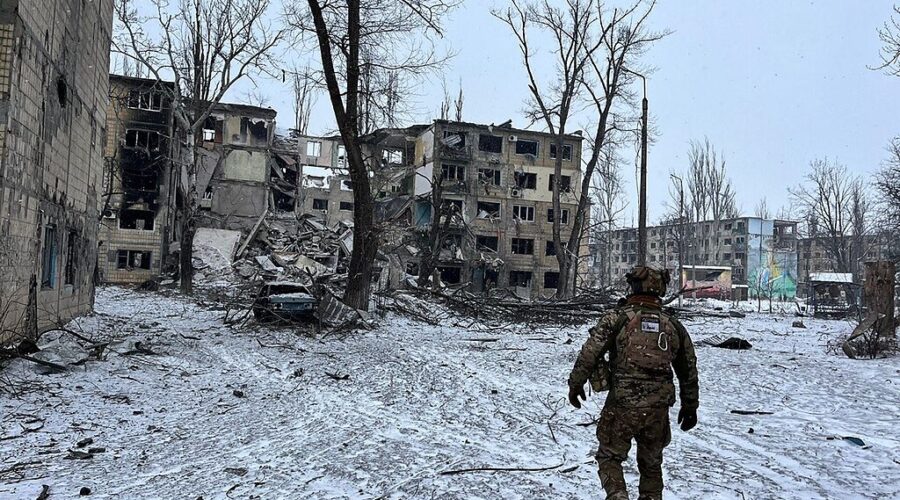Two years after Russia launched the full-scale invasion of Ukraine, and almost ten years since the war in the Donbass broke out, Russian forces have captured the town of Avdiivka – one of the most fortified settlements in the Eastern European country. Although Moscow’s action represents Russia’s biggest gain since it captured the city of Bakhmut in May 2023, the fall of the place that lies in the northern suburbs of the Russian-controlled city of Donetsk is unlikely to have a decisive impact on the outcome of the conflict.
That, however, does not mean that Avdiivka is not important, and that Ukrainian withdrawal from the town will not change the current dynamic of the war. The fact that Russia, after ten years of warfare, seized the “gateway” to Donetsk suggests that the regional capital, or at least its northern neighborhoods, will no longer live under constant Ukrainian shelling.
Over the years, the Ukrainian military has been launching missiles and artillery strikes on Donetsk from Avdiivka. In April 2014, the Moscow-backed self-proclaimed Donetsk People’s Republic captured several towns in Ukraine’s Donetsk region, including Avdiivka. In late July, however, Ukrainian forces managed to recapture the town. Ever since, they have been using it as a stronghold with a web of tunnels and concrete fortifications, effectively turning Avdiivka into possibly the most fortified settlement in Ukraine.
Russia, for its part, employed phosphorus and guided aviation bombs, turning buildings in Avdiivka into pits. As a result, the town has dwindled to only 900 people, compared to 32,000 before the war. Most of them were evacuated back in 2022, though, right after Russia invaded Ukraine. Thus, relatively few civilians died in Avdiivka, although both Russian and Ukrainian militaries have suffered huge losses over the past two years (between 2015 and 2022 they were engaged in a low-scale positional warfare).
That, however, did not prevent Moscow from using its well-known frontal assault military tactics aiming to capture Ukraine’s extremely well-fortified positions. Despite losing large numbers of troops and vehicles, Russian forces seized Avdiivka on February 17, 2024. According to Russian reports, its military captured “large numbers” of Ukrainian soldiers, while Ukraine was forced to abandon and even destroy its own Western-made vehicles.
✚ Eastern Front – Avdiivka Sector ✚
🇺🇦⚔️🇷🇺 Abandoned M2A2 Bradley and Leopard 2A6 formerly in service with the Armed Forces of Ukraine get destroyed by our side in order to not fall to the hands of the Russians. pic.twitter.com/aOnbhtvfvY
— Astraia Intel (@astraiaintel) February 19, 2024
Indeed, it was an important tactical victory for Russia, although Moscow still has not achieved any of its strategic goals in Ukraine.
Months before withdrawing from Avdiivka, Ukrainian forces built new fortifications West of the town, which means that, in the coming months, Russia and Ukraine will fight fierce and bloody battles for villages that have zero strategic importance. Given that Moscow has the initiative, and Kyiv is yet to mobilize new troops and is still waiting for the United States to approve a military aid package to the Ukrainian Armed Forces, it is entirely possible that Russia will continue making tactical gains, not only in the Donbass but also in other parts of southeastern Ukraine.
But in spite of that, the situation on the ground is not critical for Kyiv. Regardless of artillery shortages and lack of manpower, Ukraine is still holding the 1,000-kilometre front line. Even if Russia captures more territory in the near future – which is very likely to happen – it still does not have capacity to seize the strategically important cities of Kharkiv or Zaporizhzhia. In order to launch such ambitious military operations, the Kremlin would have to declare another round of partial mobilization, which is something that Russian leadership repeatedly rules out. Thus, under the current circumstances, Russia can only make some very costly, local, tactical gains in Ukraine.
But once Kyiv gets more weapons – including F-16 jets, and long-range missiles – from the West, and trains newly recruited soldiers, it will almost certainly launch another offensive against Russian forces. That is unlikely to happen in the first six months of 2024, though. Meanwhile, the initiative will remain on the Russian side, although that does not mean that, despite local defeats, Kyiv will capitulate to Moscow.
Ever since Ukraine’s 2023 failed counteroffensive, certain Western structures have been deliberately spreading the narrative of an “inevitable Ukrainian defeat”. In reality, regardless of its current difficulties, Ukraine is not on the verge of military defeat. The fact that Germany and Turkey plan to build drone and ammunition plants in the Eastern European country clearly indicates that Kyiv is preparing for a long war, and that the West does not intend to abandon Ukraine.
More importantly, the fall of Avdiivka is very unlikely to destabilize Ukrainian President Volodymyr Zelensky and his new Commander-in-Chief Oleksandr Syrskyii. In the short term, as a result of local defeats, Ukrainian soldiers could suffer from low morale, but Ukraine’s missile and drone attacks on Russian territory will, to a certain degree, “compensate” for the loss of territory. At least in the eyes of the Ukrainian war-weary population.
Politically, the popularity of Ukraine’s former top general Valerii Zaluzhnyi is expected to grow, and Zelensky might be under pressure to fire some high-ranking military officials.
Although the war fatigue and military defeats might increase rivalry between Zelensky and Zaluzhnyi, the West will undoubtedly prevent Kyiv from sinking into chaos. Instead, it will almost certainly help Ukraine preserve political stability, and in the mid-term prepare its armed forces for another round of fighting.
The battle of Avdiivka might be over, but the war itself is unlikely to end in the near future.
Image: Avdiivka in January 2024, by National Police of Ukraine

